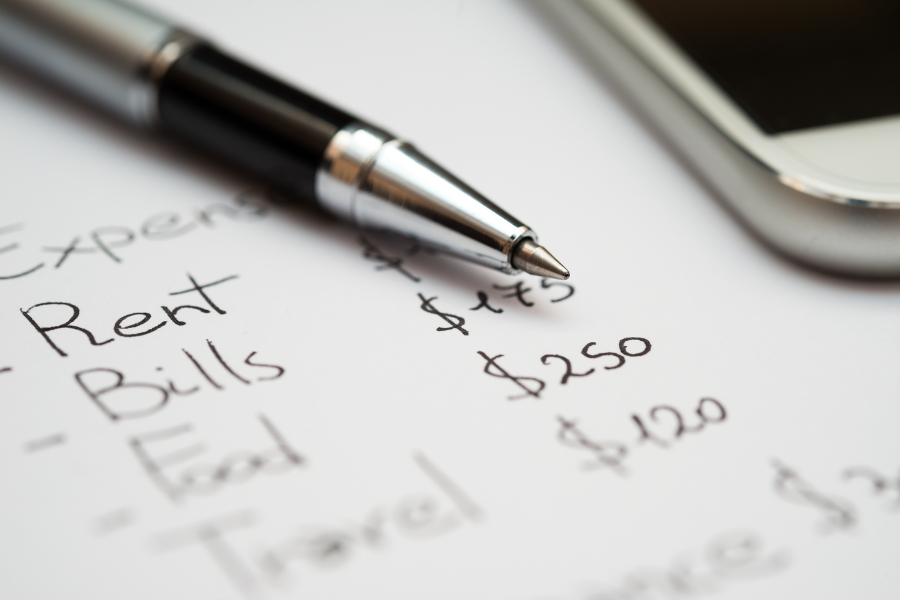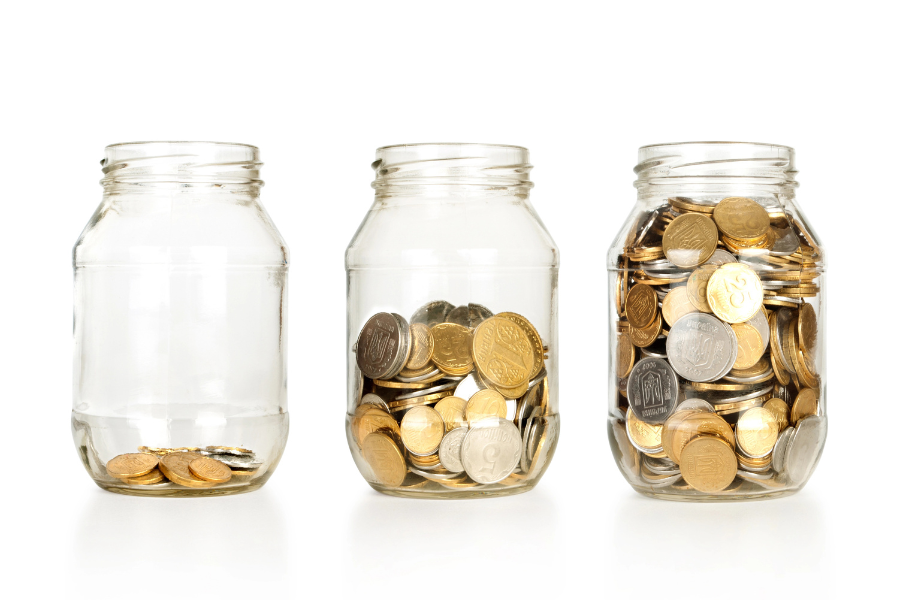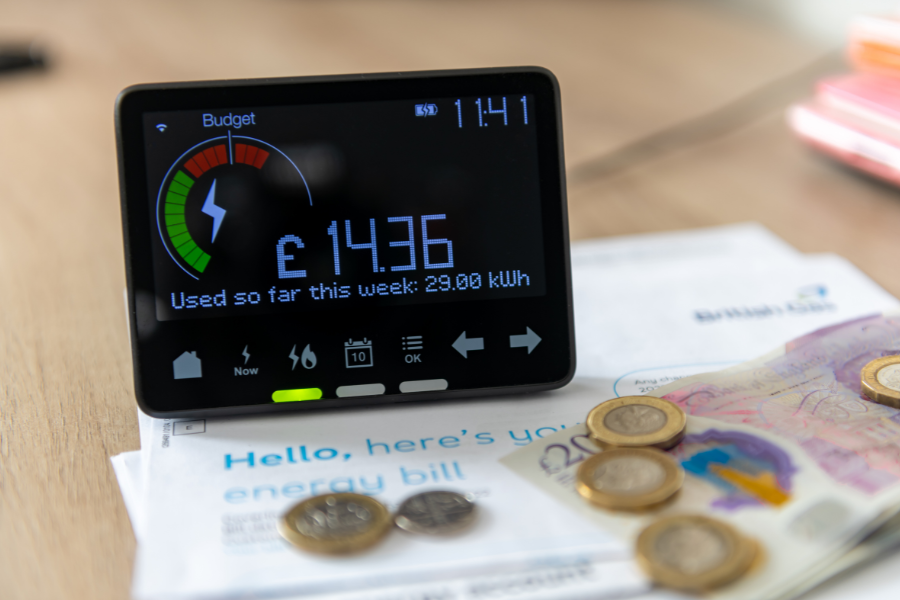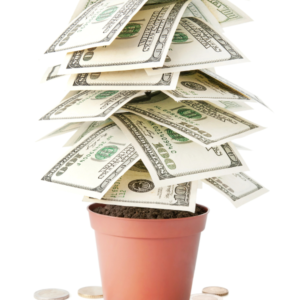This article may contain affiliate links. See our disclaimer for more information.

Welcome to our insightful guide on creative ways to save money and secure your financial future. Whether you want to learn how to save $1000 or simply find effective ways to save money, this article has you covered.
Building your savings might seem challenging, but with the right strategies in place, it can become effortless and even enjoyable. From creating a budget and tracking expenses to cutting back on unnecessary costs, we’ll show you how to make your money work harder for you.
But it’s not all about sacrificing and penny-pinching – we’ll also delve into ways to earn extra income and take advantage of coupons, discounts, and cashback offers to maximize your savings.
So, if you’re ready to explore innovative ways to save money and achieve financial security, let’s dive right in!
Create a Budget and Track Expenses

When it comes to saving money, one of the most crucial steps you can take is to create a budget. By allocating your income to different categories and tracking your expenses, you can gain a clear understanding of where your money is going and identify areas where you can cut costs.
Start by listing all your sources of income and your fixed expenses, such as rent or mortgage, utilities, and loan payments. Then, categorize your variable expenses, such as groceries, transportation, entertainment, and clothing. Be thorough and include every expense, no matter how small it may seem.
Once you’ve categorized your expenses, compare them to your income. This will give you an overall view of your financial situation and help you determine if any adjustments are needed. If your expenses exceed your income, you’ll need to find ways to cut back and save.
Tracking your expenses is essential for budgeting success. Use tools like spreadsheets, mobile apps, or even something as simple as a pen and paper to record every expense you make. Make it a habit to track your expenses daily so that you can see how your spending aligns with your budget.
As you track your expenses, you’ll likely uncover areas where you can save money. Look for patterns or recurring expenses that you can reduce or eliminate. For example, if you notice that you’re spending a significant amount on dining out or subscription services, consider cutting back on those expenses to save more.
The Benefits of Budgeting and Expense Tracking
Creating a budget and tracking your expenses offers several benefits beyond just saving money. It allows you to:
- Gain a clearer understanding of your financial habits
- Identify unnecessary expenses
- Set specific savings goals
- Plan for future expenses
- Reduce financial stress and anxiety
Budgeting is not about restricting yourself; it’s about making conscious choices with your money and prioritizing your long-term financial goals. By creating a budget and tracking your expenses, you’ll be well on your way to saving money and achieving financial stability.
Cut Back on Unnecessary Expenses

Let’s discuss how to reduce unnecessary expenses in your daily life. By eliminating or minimizing these expenses, you can save a significant amount of money.
One effective way to cut back on expenses and save money is by reviewing your monthly subscriptions and memberships. Take a close look at the services you are subscribed to and consider if you really need all of them. Canceling unnecessary subscriptions can help you free up funds for more important expenses or savings.
- Start by making a list of all your subscriptions and memberships, including streaming platforms, gym memberships, and magazine subscriptions.
- Evaluate each item on the list and question if you genuinely use and enjoy the service or if it has become an unnecessary expense. Are any of those expenses something that you keep promising you’ll start using next month? If that’s what you keep saying, then get rid of it.
- Consider alternatives or free options for similar services. For example, instead of paying for multiple streaming platforms, choose one that offers a wide range of content that suits your interests.
- Once you have identified subscriptions you can live without, take the necessary steps to cancel them. This could involve contacting customer service or canceling through the respective online platforms.
Another way to cut back on expenses is by reviewing your monthly bills and negotiating better deals with service providers. This can include your internet, cable, or phone bill.
Here are some ways to save on expenses:
- Research current pricing and promotions from different service providers in your area.
- Contact your current provider and inquire about any available discounts or promotions for loyal customers.
- If your current provider is unable to offer a better deal, consider switching to a different provider that offers more affordable rates.
I saved on cable for several years by canceling it for about a month and then getting a promotional “come back” code from my local provider. Eventually, I cut the cable cord for good and now have a discounted streaming service.
Another way to save is by reducing your dining out expenses. This can have a significant impact on your savings. Instead of eating out regularly, try cooking more meals at home and meal prepping for the week.
- Plan your meals in advance and create a shopping list based on the ingredients needed for those meals.
- Look for sales or discounts on grocery items and stock up on non-perishable items when they are on sale.
- Consider trying new recipes and experimenting with budget-friendly ingredients.
These are just a few suggestions for cutting back your expenses. You may find other areas in your budget where you can cut back. By cutting back on unnecessary expenses, you can save money and allocate those funds towards your financial goals. Remember, small changes can add up over time, resulting in significant savings.
Automate Savings

Automating your savings is a smart and efficient way to save money effortlessly. By setting up automated transfers, you can ensure that a portion of your income goes directly into your savings account without you even having to think about it. This eliminates the temptation to spend the money instead. This method allowed me to save several thousand dollars last year.
There are several methods and tools available to automate your savings and make the process seamless. One popular option is to set up automatic transfers from your checking account to your savings account on a regular schedule, such as each payday or once a month. This way, a predetermined amount is automatically moved to your savings, helping you build your savings balance over time.
Another automated saving method is to use savings apps and financial management tools that round up your purchases and save the spare change. For example, if you make a purchase for $4.75, these apps will round the amount up to $5 and save the extra $0.25 in your savings account. This small change may not seem like much at first, but it can add up over time. I absolutely love using the app Acorns to do this.
Additionally, some banks offer automatic savings programs that allow you to set savings goals and automatically transfer funds from your checking account to your savings account. These programs can help you stay disciplined and reach your savings targets faster. Ally Bank has a smart savings feature that I use throughout the year for this.
By automating your savings, you can make saving money a consistent and effortless part of your financial routine. It takes away the burden of manually transferring funds and ensures that you are consistently working towards your savings goals.
Benefits of Automating Your Savings:
- Consistent and effortless saving
- Eliminates the temptation to spend
- Helps you reach your savings goals faster
- Reduces the risk of forgetting to save
- Creates a healthy financial habit
Automating your savings is a practical strategy that can help you save money without even thinking about it. Implementing this approach, along with other creative ways to save money, can significantly improve your financial well-being.
Save Money on Food and Groceries

Food expenses can quickly add up, but with some smart shopping strategies and meal planning techniques, you can save a considerable amount of money on your grocery bills.
- Create a Grocery List: Before heading to the store, make a list of the items you need. This will help you stick to your budget and avoid impulsive purchases.
- Compare Prices: Take some time to compare prices at different grocery stores. Look for promotions and discounts to get the best deals.
- Buy in Bulk: Purchasing items in bulk can significantly reduce their cost per unit, saving you money in the long run. If the goods are perishable be sure to store them properly to avoid spoilage.
- Choose Generic Brands: Generic or store-brand products are often just as good as their branded counterparts but offered at a lower price. Give them a try to save money without sacrificing quality.
- Shop Seasonally: Buying fruits and vegetables that are in season is not only cheaper but also fresher. Explore local farmers’ markets for the best deals on seasonal produce.
- Plan Your Meals: Meal planning is an excellent way to save money and reduce food waste. Plan your meals for the week and make a shopping list accordingly. This way, you only buy what you need.
- Cook at Home: Eating out can be costly, so try cooking at home more often. Not only will you save money, but you’ll also have more control over the ingredients and portion sizes.
- Avoid Wasting Food: Be mindful of the food you already have and plan meals to use up leftovers. Avoid throwing away food by storing it properly and utilizing it in creative ways.
- Use Coupons and Apps: Take advantage of coupons and money-saving apps that offer discounts on groceries. Sign up for loyalty programs at your favorite stores to access exclusive deals.
- Consider Farmer’s Markets and Community Supported Agriculture (CSA): Supporting local farmers through farmer’s markets or CSA programs can help you save money while getting high-quality, fresh produce.
By implementing these strategies, you can save money on food and groceries without compromising on quality or nutrition. Start incorporating them into your shopping routine and watch your savings grow!
Reduce Energy Consumption and Save on Utilities

Reducing energy consumption not only helps the environment but also allows you to save money on your utility bills. By implementing these practical tips, you can make your home more energy-efficient and keep more money in your pocket.
Use these tips below:
- Upgrade to energy-efficient appliances: Replace old, energy-guzzling appliances with Energy Star certified models. These appliances use less electricity, resulting in reduced energy consumption and lower utility bills. Over time this will save you significant amounts of cash.
- Insulate your home: Proper insulation helps maintain a comfortable temperature indoors, reducing the need for excessive heating or cooling. Invest in insulation for your walls, attic, and windows to prevent energy loss and save on heating and cooling costs.
- Unplug unused electronics: Many electronic devices continue to consume energy even when they’re turned off. Unplug devices like chargers, TVs, and computers when not in use to avoid phantom energy usage and lower your electricity bills.
- Install energy-efficient lighting: Replace traditional incandescent bulbs with energy-efficient alternatives like LED or CFL bulbs. These bulbs consume less energy and last longer, resulting in substantial savings over time.
- Adjust thermostat settings: Set your thermostat a few degrees lower during winter or higher during summer to reduce energy consumption. Consider using a programmable thermostat to automatically adjust temperatures based on your schedule, avoiding unnecessary energy usage.
- Seal air leaks: Identify and seal air leaks in your home, including gaps around windows and doors. This helps maintain a consistent temperature indoors, reducing reliance on heating or cooling systems and lowering your utility bills.
- Optimize water usage: Install low-flow showerheads and faucet aerators to conserve water. Additionally, fix any leaks or drips promptly to avoid wasting water and reduce your water bills.
By incorporating these energy-saving measures into your daily routine, you can significantly reduce energy consumption and save money on utilities. Take control of your energy usage and contribute to a greener, more cost-effective future.
Find Ways to Earn Extra Income

If you’re looking save more money, increasing your income is a smart strategy to consider. By exploring different opportunities to earn extra income, you can accelerate your savings goals and achieve financial success.
Side Hustles
One way to earn extra income is through side hustles. These are flexible part-time jobs or gigs that you can do alongside your full-time job or other commitments. Side hustles can range from freelance work, like graphic design or writing, to driving for rideshare services or pet sitting.
Online Opportunities
The internet provides numerous opportunities to make extra income from the comfort of your own home. You can explore online platforms that connect freelancers with clients seeking various services. Examples include graphic design, virtual assistants, content writing, and consulting. Additionally, you can consider participating in online surveys, selling products online, or starting an Etsy store to showcase your creative talents.
Rent Out Assets
If you have assets that are not in use, you can consider renting them out to earn extra income. For example, if you have an extra room in your house, you can utilize platforms like Airbnb to host guests and generate rental income. Similarly, if you own a car but don’t use it often, you can rent it out through car-sharing platforms. I’ve even seen people rent out space in their backyard and garage for some extra income.
Investment Income
Another way to earn extra income is through investments. Investing in stocks, bonds, mutual funds, or real estate can provide you with passive income in the form of dividends, interest, or rental income. However, it’s important to conduct thorough research and seek professional advice before venturing into investments to minimize risk.
Monetize Your Skills
If you have specialized skills or knowledge, consider monetizing them to earn extra income. For example, if you’re skilled in photography, you can offer photography sessions or sell your photos online. If you’re proficient in a particular subject or language, you can offer tutoring services or teach a language class. Think about how you can leverage your specific skills to provide value and generate extra income.
By exploring these avenues to earn extra income, you can not only increase your earnings but also save more money and accelerate your journey towards financial stability. Remember to always prioritize your time and choose opportunities that align with your interests and schedule.
Use Coupons, Discounts, and Cashback Offers

Let’s dive deeper on ways to save money on your purchases. Look no further than coupons, discounts, and cashback offers to make some extra savings. By taking advantage of these opportunities, you can stretch your budget and keep more money in your pocket.
Here are some tips on how to make the most of these deals:
- Clip Coupons: Start by collecting coupons from newspapers, magazines, and online coupon websites. Whether it’s for groceries, clothing, or electronics, coupons can significantly reduce the cost of your purchases.
- Sign Up for Store Discounts: Many retailers offer exclusive discounts and special promotions to their loyal customers. Sign up for their newsletters or loyalty programs to stay updated on the latest deals and maximize your savings.
- Check Online Coupon Codes: Before making an online purchase, always search for coupon codes that can be applied at checkout. Websites like RetailMeNot and Coupons.com provide a wide range of discount codes for various online retailers.
- Shop during Sales Events: Keep an eye out for seasonal sales events, such as Black Friday or Cyber Monday, where retailers offer massive discounts on their products. Plan your purchases around these events to save big.
- Compare Prices: Don’t settle for the first deal you find. Take the time to compare prices at different stores or online platforms to ensure you’re getting the best possible price. Price comparison websites like PriceGrabber and Google Shopping can help in finding the lowest prices.
In addition to coupons and discounts, cashback offers can also help you save money. Here’s how:
- Use Cashback Apps: Install cashback apps like Rakuten, Swagbucks, or Honey on your smartphone or browser. These apps offer cashback rewards when you make purchases through their affiliated retailers.
- Pay with Cashback Credit Cards: Some credit cards offer cash back rewards for every purchase you make. Use these cards wisely and pay off your balance in full to avoid interest charges while earning cashback on your everyday expenses.
- Stack your Savings: Combine coupons, discounts, and cashback offers to maximize your savings. Look for opportunities where you can use multiple savings methods for one transaction and watch your savings grow.
By utilizing coupons, discounts, and cashback offers, you can save money on both everyday items and big-ticket purchases. Start implementing these strategies today and watch your savings grow!
Prioritize Saving $1000 as an Emergency Fund

Building an emergency fund is crucial for financial stability. Unexpected expenses can arise at any time, such as medical bills, car repairs, or job loss. Having a solid emergency fund of $1000 can provide a safety net and help you avoid going into debt.
The Importance of an Emergency Fund
An emergency fund serves as a buffer against unforeseen circumstances and provides peace of mind. It allows you to handle unexpected expenses without having to rely on credit cards or loans, saving you from high-interest charges and unnecessary debt.
Steps to Achieve a $1000 Emergency Fund
- Set Saving Goals: Determine a realistic timeline to save $1000. Break it down into smaller monthly or weekly savings targets to make it more attainable.
- Create a Budget: Review your income and expenses to identify areas where you can cut back and divert more funds toward your emergency fund.
- Automate Your Savings: Set up automatic transfers from your paycheck or checking account to a dedicated emergency fund account. This ensures consistent contributions without relying on self-discipline.
- Track Your Progress: Regularly monitor your savings growth to stay motivated and celebrate milestones along the way.
- Reduce Unnecessary Spending: Make conscious choices to prioritize your emergency fund over nonessential purchases. Consider cutting back on dining out, entertainment expenses, or unnecessary subscriptions.
- Boost Your Income: Look for opportunities to increase your income, such as taking on a side gig or freelancing. Direct the additional earnings towards your emergency fund.
- Minimize Expenses: Review your fixed expenses like insurance policies, phone plans, and utilities. Research alternative providers or negotiate better deals to save money.
- Save Windfalls and Bonuses: Whenever you receive unexpected money like tax refunds, work bonuses, or other windfalls, resist the temptation to spend it impulsively. Instead, allocate a portion or the entirety towards your emergency fund.
By prioritizing saving $1000 as an emergency fund, you’re creating a financial safety net that will provide peace of mind. Knowing that you have funds set aside for unexpected expenses allows you to navigate challenging times with confidence and security.
For more on How to Save $1000, check our article here!
Conclusion

Adopting creative strategies to save money can have a significant impact on your financial well-being. By creating a budget, tracking your expenses, and cutting back on unnecessary costs, you can take control of your finances and increase your savings.
Automating your savings and finding ways to earn extra income are also effective techniques to boost your savings effortlessly. Additionally, utilizing coupons, discounts, and cashback offers can help you save money on your purchases.
Remember to prioritize establishing an emergency fund of $1000, as it provides a safety net during unexpected financial situations and prevents you from going further into debt. With consistent effort and determination, you can implement these strategies and take the necessary steps toward securing your financial future.





